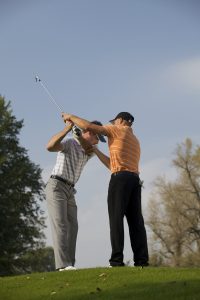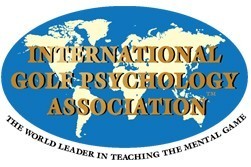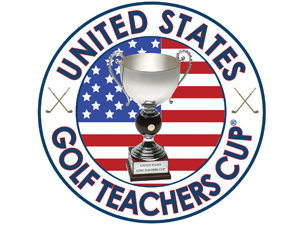Blog
USGTF ADDS NEW PARTNER
USGTF ACTIVE ON SOCIAL MEDIA
HENRY WINS THIRD CENTRAL REGION TITLE
DEADLINE FOR US CUP ENTRY THIS MONTH
Fairways For Warriors Making A Difference
 USGTF Certified Golf Teaching Professional Dennis Daugherty from Clermont, Florida, has a passion for giving back. Through his work organizing golf events for the American Cancer Society, United Way, Make A Wish Foundation and others, Daugherty’s efforts reap rewards for those who face life’s difficulties.
USGTF Certified Golf Teaching Professional Dennis Daugherty from Clermont, Florida, has a passion for giving back. Through his work organizing golf events for the American Cancer Society, United Way, Make A Wish Foundation and others, Daugherty’s efforts reap rewards for those who face life’s difficulties.
Most recently, he has worked with a group called Fairways for Warriors, an organization that has as its mission providing golf instruction, equipment, and outings for combat-wounded veterans. This helps with the rehabilitation process through physical, cognitive, social, and emotional health benefits through the game of golf. In addition, families are aided through their participation in the programs.
According to its website, “Warriors can’t heal alone, so Fairways for Warriors events and support community is open to the families of wounded warriors, as well. We provide golf equipment, instruction, and outings to wounded warriors and all their family members who wish to participate in the spirit of fun and healing.”
When it comes to rehabilitation, Fairways for Warriors says the most significant injuries aren’t seen, and include depression, post-traumatic stress, and brain injury. The program is designed to help men and women heal from such injuries and the wounded warriors “experience a sense of support and community again.”
In regards to physical health benefits, Fairways for Warriors aims to improve hand-eye coordination and increase functional independence, balance, strength, endurance, fine motor skills, and flexibility, with the goal of reducing the risk of secondary medical complications. Cognitive health benefits include enhanced self-esteem, assisting with managing stress and anxiety, alleviating and decreasing the risk of depression, and increasing coordination skills, focus, and attention. Social health benefits are enhanced relationships among fellow veterans, families and friends; creating networks and providing accessible resources while giving veterans a sense of belonging, and creating a shared space and experience that helps breakdown negative perceptions, allowing individuals to focus on their commonalities. Finally, the emotional health benefits allow veterans the freedom to make choices that lead to meaningful leisure experiences, and draw on their strengths and assets of energy, enthusiasm, skills, and the desire to excel.
A number of veterans sing the praises of Fairways for Warriors. Steven Allberry said, “Fairways for Warriors has changed my life in so many ways…. And I am now part of the biggest family and support team ever. All of the members of Fairways for Warriors are my brothers and sisters.”
Jack Wiseman, a Vietnam War veteran, commented, “Fairways gives the older vets an opportunity to share our experience, strength, and hope, to the younger vets, not just in golf, but in life.”
Bryan C. Coons stated, “This group of people has allowed me to live again through fellowship, friendship, and lastly golf. I love the game of golf and it allows me the camaraderie that I need in the aspect that it mimics life and military state of friendship. Fairways for Warriors has made me a better Christian, husband/father, and all-around person.”
Fairways for Warriors currently has three chapters in Orlando, Florida; San Antonio, Texas; and Jacksonville, Florida. Tom Underdown is the founder and director, and his e-mail address is tom@fairwaysforwarriorsorg.
For more information on the organization, please visit www.FairwaysForWarriors.com.
Growing The Game
The Power of Mindset and Positive Self-Talk
Getting Worse Before Getting Better (more to the story)

Golf professional helping young man with his swing
You might see someone undergoing a swing change who hits almost every ball poorly, but they stick with it under the guise of getting worse before getting better. However in fact, this person may not actually be on the right path. The question becomes, how can we distinguish between someone getting worse who will eventually get better, as opposed to someone getting worse before…staying that way?
We can start with these two tenets: 1) Students who execute our instruction properly during a given swing should hit the ball better with that swing. 2) Students who execute our instruction properly, but either don’t see improvement or hit the ball worse, means that our instruction is incorrect.
Now, the student who sees ball striking improvement with our instruction may get worse in terms of consistency. That’s the key word. In most cases they’re still going to hit more poor shots than good ones initially, but as long as they’re hitting some good shots and seeing a better ball flight on occasion, then we’re on the right track. Here’s an example:
Bob is chicken-winging his left elbow through impact, which we diagnose to be his major problem. We get Bob to turn his body better through impact, eliminating the chicken wing. He hits some good shots, but also some bad ones. Do the bad shots mean he’s not executing our instruction correctly? In a very narrow sense, yes, but that’s too strict of a measure. The key here is that Bob is seeing an improvement in his ballstriking on some shots, but he has yet to learn the nuances involved in the new move, making it understandable why he hits many poor shots initially. We’re on the right path. Bob’s scores may suffer for a while, but eventually he’ll turn it around and start improving. Here’s where “getting worse before getting better” makes sense.
We’ll use the same example for the second tenet mentioned earlier. We get Bob to turn his body better through impact, eliminating the chicken wing, but he can’t hit a good shot to save his life. Should we just tell Bob he needs to just grin and bear it, that you have to get worse before you get better? No. And what’s worse, that’s lazy teaching. We may have correctly diagnosed Bob’s problem and come up with the correct solution, but people aren’t like robots that we can program to be automatic.
So now we have to find a way for Bob to start seeing some good results at least once in a while. For example, maybe he had to stand too close to the ball with his old swing because of the reduced radius; now he’s got a bigger radius and is not used to it. Standing farther away may help his cause. Whatever the reason Bob is struggling, we have to come up with a way for him to hit the ball better– at least occasionally – before the lesson ends. More often than not, this involves giving him an additional key to focus on, or making a secondary change to go with the main one.
One aspect that needs to be discussed is when we accurately diagnose the problem, give the proper cure, and the student just cannot get it, no matter what. It’s tempting to send the student on his way, telling him to just keep working on it and to remember that you have to get worse before you get better. But such action is akin to teaching malpractice. It may be hard to abandon what we know to be the correct solution, but if it becomes obvious the student will never get it, we must change course.
Three Ways To Boost Confidence In Your Athletes
- Help them become aware of — and challenge — their core beliefs.




